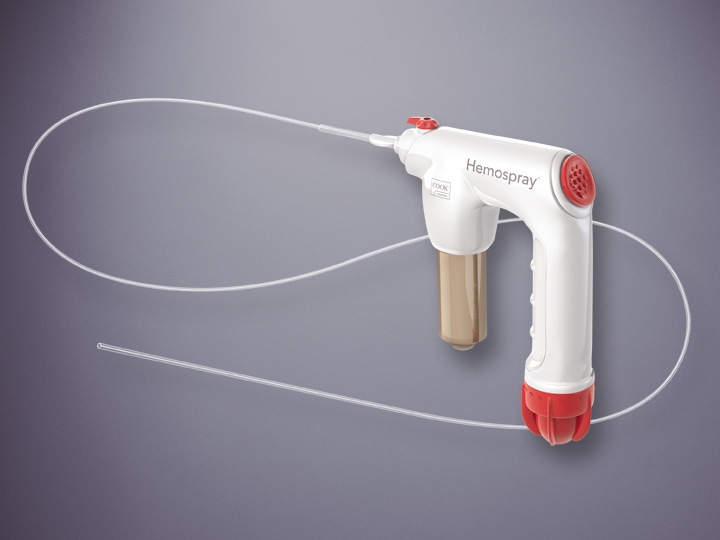Cook Medical concluded a 10-year-journey this week after it received approval of its Hemospray in the U.S. to treat gastrointestinal bleeds.
May 8, 2018

Cook Medical has been focused on finding an easier way to treat patients suffering from gastrointestinal bleeds. For nearly 10 years the Bloomington IN-based company has been developing the Hemospray, a powder like device that has just received a nod from FDA.
Barry Slowey, VP of Cook Medical’s Endoscopy specialty, said the company got the idea for Hemospray from an application used by the U.S. military in Afghanistan and Iraq to treat wounds on the battlefield.
“If you look at the how bleeds are treated in the gastrointestinal tract, you see the treatments are either mechanical, like an endoscopic clip that closes off an artery, or it’s a heater probe to burn it," Slowey told MD+DI. "We were trying to think of a better way to do it. We came up with the concept of using a spray.”
Thermal, mechanical or contact devices can carry a risk of further tissue damage and require precise placement of the device directly onto the bleeding vessel. However, Cook said Hemospray can reduce the risk of tissue damage. The device delivers hemostatic powder through the channel of an endoscope toward the source of a bleed. When the powder comes in contact with blood, it absorbs water and forms a gel, which acts cohesively and adhesively to create a stable mechanical barrier that covers the bleeding site.
The company has had approval for Hemospray outside of the U.S. since 2011.
Numerous reports in the clinical literature have demonstrated the clinical utility of Hemospray when used alone or with other methods. In a summary of 19 studies of Hemospray comprising treatment of 234 patients, the combined rate of successful hemostasis was 88.5%. Rebleeding occurred within 72 hours in 16.2% after successful initial hemostasis with Hemospray.
“We were able to put together a clinical evidence report from FDA which included 560 published cases over a number of papers across the world,” Slowey said. “In addition to those cases, we were also able to include the data from three Cook sponsored studies.”
About the Author(s)
You May Also Like




